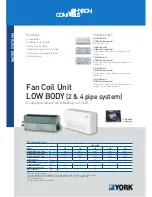
Key Administration
_______________________________
K2100/K1100 User Guide
_______________________________
© 1994 Radionics, Inc.
Page 14
74-07069-000-B 3/94
Key Administration
The heart of the Access Control system is the administration of keys. Each key that is
issued will allow the keyholder access through certain doors at certain times. This chapter
describes how to add, delete (or void), and edit keys.
The Personnel Database
Identifying Personnel
There are two ways in which individual keyholders can be identified within the system. The
first is to use an automatically generated ID number, between 1 and 4000. The second
method allows the operator to give a name, of up to 12 characters, to each keyholder.
Note:
You should decide before you start issuing keys which method you will use. The
system has to be set up to use one method or the other. Although this can be changed
later without losing information, it is not recommended.
4 Digit Number
The main advantage of this method is speed of entry, you will not have to enter a different
name for every key that is issued. The disadvantage is that all references within the
system, including printed reports, are to the 4 digit number. This can make identification of
keyholders difficult as you will have to keep looking up your own records. You are not able
to select the number that is issued, the system will always issue the first free number. For
instance if you issue 120 keys, they will be automatically identified as
to
when
added. If you were to delete, say, numbers 25 and 42, then the next keys issued would be
identified as
,
followed by
,
and so on.
If you use this method then it is vital that you keep an accurate record of the 4 digit ID
issued to each key, and to whom the key is issued. If a keyholder loses a key then, unless
you have an accurate record, you will not be able to delete the lost key from the system as
you will not know the ID number.
12 Character Name
A better method, and easier to administer once all the keys are issued, is to use the 12
character name. In this case whenever a key is issued you will have to enter a unique
name. The name may consist of up to 12 characters using A-Z, 0-9 and space (SPC on
the keypad). Names should not start with a space or a number. You will probably use the
keyholder's name and initials, e.g.
or
. You could, of course, use any
naming system you feel is appropriate, such as payroll or employee numbers. Remember
names
must
be unique - you will be warned if a duplicate name is entered.
The Token Code
This is the unique code stored in each key. It is written permanently into the key during
manufacture and never changes. In routine use you will not have to use this code.
However there are some occasions on which it can be used. One of these is the adding of
keys without physically being in possession of the key. This may come about if one or
more keys are accidentally removed from the system, and it may not be possible or
convenient to recall the lost keys from the keyholders. If a record has been kept of the
token codes of all keys then these can be entered instead of presenting the key itself. The
personnel printout (Command
P1
) contains the token code of each key and is an ideal
record for such purposes.
















































